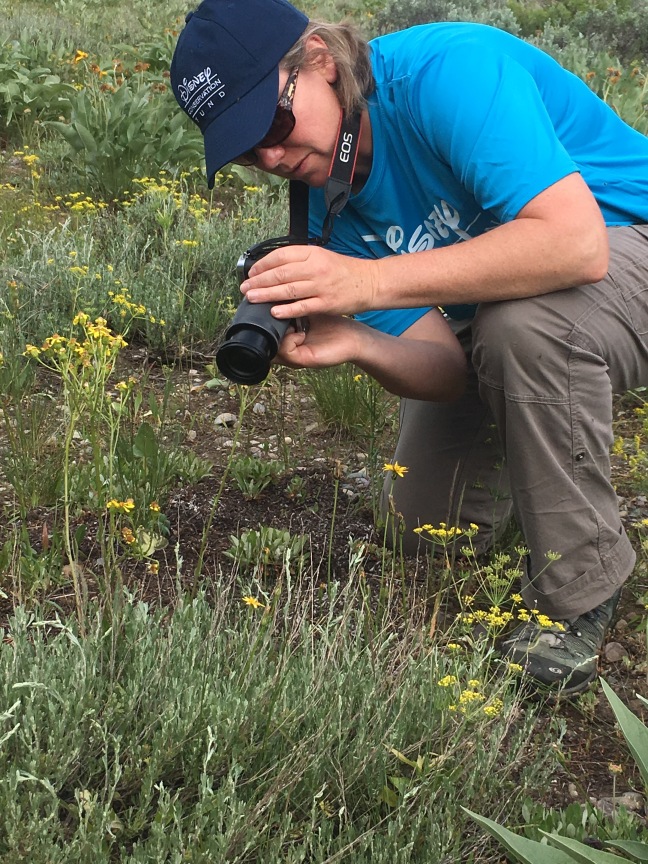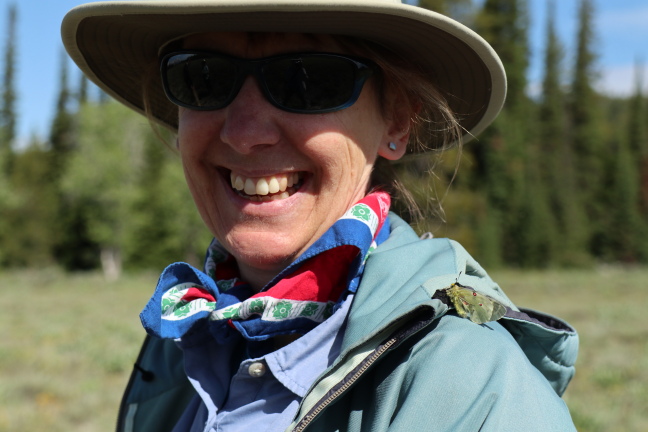AMES, Iowa — Kim Moss hunched over plants with her camera for hours in Grand Teton National Park this summer, hoping to capture the Parnassius clodius butterfly laying its eggs. She accomplished her goal.
Moss, assistant professor of art and visual culture and coordinator of the biological and premedical illustration program at Iowa State University, is the first person to shoot video and photos of where this butterfly lays its eggs.
Her success is part of a larger research project studying the P. clodius butterfly and how it is a bioindicator for climate change. Moss and Diane Debinski, professor and department head of ecology at Montana State University, received a Disney Conservation Fund grant for this research. Debinski has studied the P. clodius butterfly for 30 years.
Moss’ part of the project consists of developing a comprehensive educational outreach program including an iBook and exhibit display.
P. clodius is an alpine, non-migratory yellow-white butterfly located in the Greater Yellowstone Ecosystem. Its life in this fragile region is particularly susceptible to the effects of climate change and provides researchers “a way to study what’s happening more broadly,” Moss says.
The research team worked out of the University of Wyoming-National Park Service Research Station this summer, conducting field work at the Pilgrim Creek site in the Grand Tetons.
Finding the missing piece of the puzzle
“It was my last day in the field and I wanted to reshoot some images and video,” Moss said. “After I finished that, I thought I would follow the butterflies. Who knows, maybe I’ll see something interesting.”
She chased after a male butterfly who eventually found a female. They mate a couple of inches off the ground, but it was previously unknown where the female lays her eggs. After the pair decoupled, Moss followed the female to six different plants. She feverishly shot video and photos of each, hoping she captured something valuable, watching her dying camera battery and keeping an eye out for grizzly bears.
When she looked back at the footage, she realized what she had captured over the past several hours. The female had laid her eggs on two different arrowleaf balsamroot plants.
“You need to get down very close to the ground and exercise patience,” Moss said. “It’s about the power of observation and a sense of inquiry. There’s a whole ecosystem in this very small area that’s a link to the bigger picture.”
The research team’s goal is to improve public knowledge of the P. clodius butterfly and other Parnassius butterflies around the world. Moss is using her expertise in biomedical illustration and instructional design to draw the butterfly and its habitat, which will be used in an iBook and exhibit displays she’s creating for K-5 students and visitors to national parks.
These materials will not only educate, but involve youth and the general public in conservation efforts. A field guide within the iBook will help people report sightings of the butterfly to citizen science tracking websites. Debinski is monitoring P. clodius populations and investigating whether “butterfly waystations” are a viable option to help the butterflies with habitat and plants during their flight season every summer.
Climate change affects Parnassius butterflies around the world: tree lines encroach on habitat, increasing temperatures change annual snowmelts important for the butterfly’s overwintering, and changing seasons affect the timing of plant growth essential to the butterfly’s diet.
“Parnassius is a specialist rather than a generalist, meaning it has particular living requirements and is therefore particularly susceptible to erratic weather patterns,” Moss said.
“Seeing where the Parnassius clodius butterfly lays its eggs was a huge missing piece of the puzzle to understand how this butterfly overwinters and how it’s linked to climate change.”

